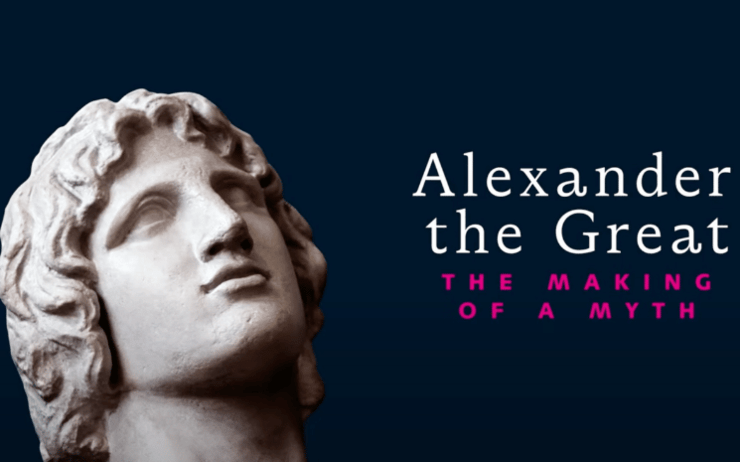“Alexander the Great, the making of a myth” at the British Library or how cultures and religions around the world have built a fabulous fiction around a hero, used for their own ends.
Alexander the Great, the making of a myth, the entire exhibition finds its justification in its title alone. Born in Macedonia, in 356 BC, he will have built, at his death, 32 years later, an empire extending from Greece to the Hindu Kush, and including Egypt and Persia. Traveling through the story of his life, this exhibition, very scholarly and innovative, is essentially interested in the creation of legends and the use of the myth that surrounds him.
How and why, spreading through the cultures of Europe, Asia and beyond, they took on a fantastic and supernatural dimension. Works from 25 countries in 21 languages plunge us into shared stories, sources of mirrors of medieval princes, like the different versions of the Roman d’Alexandre declined in its multiple variants. But also through theatre, poetry, and up to the present day, through novels, comic strips, films and even video games.
The exhibition is divided into six sectionseach illustrating the evolution of Alexander, the man and the legend through detailed works, often old and rare, of great aesthetic value.
THE MAN AND THE LEGEND
The legends began to circulate, during his very life, and much more after his death, eclipsing the historical reality. Several cultures and religions have adapted these legends, each reinterpreting them according to its own objectives.
This section explores these different aspects. Prophet for some, sent from the devil for others. Simultaneously conqueror, master of the world and philosopher King, aspiring to knowledge and immortality.
A CONQUEROR IN THE MAKING
The origins of Alexander took a legendary turn both in the East and in the West. Son of Philip II of Macedonia, he was for some that of Nectanebo the serpent-magician, or even that of the King of the Persians. This, depending on the context in which it was necessary to seek to legitimize its power. The two faces of Alexander are personified by his horse Bucephalus, for appearance, and Aristotle, his tutor, for spiritual aspect. The latter will teach him the art of governing, philosophy, astrology, alchemy and medicine.
BUILDING AN EMPIRE
Alexander succeeded his father Philip in 336 BC, and in ten years, conquered Persia and reigned from Greece to Punjab. At the age of 30. Literary essays will relate his epic, making little distinction between historical reality and imaginary stories, interweaving different cultures and religions. As a military leader, he inspired generations of leaders over many centuries, and not always for the better.
ALEXANDER’S RELATIONSHIPS
Polygamous, the rivalry of the two wives Roxane and Stateira will become the subject of plays and novels. The power of certain women, real or legendary, has played a key role throughout this epic. The charisma of Candace, Nushabah, queen of the Amazons, allowed them to protect their territories against the Macedonian army. In contemporary times, through novelists and artists, his proximity to one of his generals, Hephaestion, or his eunuch slave Bagoas, raises questions.
MYTHICAL QUEST
If the historical Alexander will walk to present-day Pakistani Punjab, the mythical Alexander will venture to the unknown confines of the world, crossing strange territories sometimes inhabited by peoples who eat men, sometimes sirens but also griffins and dragons. An initiatory journey through fabulous worlds, in search of the secret of immortality.
JOURNEY’S END
Faced with his own exhausted soldiers and threatened with mutiny, the Macedonian’s dream turns into a nightmare. He will give up and lose half of his men on the way back to Babylon. He only survived them for a year. If the cause of his death is unknown, the stories obviously flourish. His remains will be transported in great pomp to Egypt and deposited in his mausoleum in Alexandria, the city he had founded. The tomb has disappeared, but some believe they have identified its sarcophagus. Real or imaginary. Regardless, let yourself be carried away by this extraordinary epic, told in a way that is both scholarly and magical!!!
The exhibition lasts until Sunday 19 February.
The British Library
96 Euston Road London NW1 2DB
By Roberto Pistolesi.
“Alexander the Great, the making of a myth”: the exhibition to discover at the British Library

